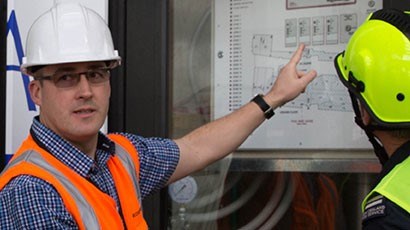Behind the Flames: How Fire Safety Services Protect Lives
Fire prevention is an essential aspect of our lives, yet it often goes unnoticed until disaster strikes. From houses to companies, understanding fire risks and executing efficient safety measures can mean the difference between life and death. Fire safety services play a key role in protecting both people and property by providing the needed tools, education, and support to minimize these risks. In this article, we will examine how these services operate behind closed doors, arming individuals and organizations with the insight and resources vital for preventing fires and ensuring a prompt response during emergencies.
As we delve into various components of fire safety, including assessment strategies, safety equipment, and emergency preparedness, it becomes clear that awareness is crucial. Whether it is understanding common fire hazards in homes or the necessity of smoke alarms and fire drills, every detail counts. By implementing fire engineering consultants , we not only safeguard our loved ones and assets but also participate to a culture of safety that can extend beyond our immediate environment. Join us as we reveal the myriad ways fire safety services preserve life and help us create a more secure community for all.
Crucial Fire Safety Guidelines
Keeping your residence and business safe from fire hazards starts with awareness and preparation. Regularly checking smoke alarms is vital; ensure they are installed in key areas and test them monthly. Replace batteries at least each year and entire units every ten years. Additionally, have a fire extinguisher on hand, especially in kitchens or areas with likely fire risks. Familiarize yourself with how to use it correctly, as quick action can often prevent small fires from growing.
Creating a fire escape plan is crucial for every group and workplace. Identify all exits and designate a meeting place outside where everyone can meet in case of an emergency. Practice this plan through regular fire drills, which can help reduce anxiety during an actual event. Ensure that all members know how to navigate stairs and exits effectively, particularly in high-rise buildings where elevators should not be used during a fire.
Another critical aspect of fire safety is recognizing common hazards around your premises. Keep ignitable materials, such as documents, textiles, and chemicals, away from heat sources. Be cautious with electrical wiring; damaged cords or overloaded outlets can spark fires. In addition, make sure to have adequate clearance around heaters and fireplaces to prevent unexpected fires. Frequently inspecting these risk areas helps maintain a safer environment for everyone.
Establishing a Fire Emergency Plan
A well-structured fire emergency plan is essential for securing the safety of everyone in your home or office. Begin by determining all possible exit routes from each room. Confirm these routes are clear of hazards and simple to navigate. Assign a secure meeting point outside where all individuals can gather after exiting the structure. Fire Safety Strategy helps keep track for all individuals and avoids chaos during an emergency.
Subsequently, it’s essential to convey the plan to all involved. Hold training sessions or meetings to discuss the plan in detail, ensuring all participants comprehends their duties during a fire emergency. Urge practice drills consistently, so all individuals becomes familiar with the process and can act swiftly if a real incident occurs. Rehearsal builds confidence and comprehension, making it easier for individuals to respond efficiently during crisis situations.
Finally, regularly update your fire emergency plan. Circumstances change over the years, such as alterations in the configuration of your property or the inclusion of new staff or household members. Confirm that your plan reflects these modifications and that all participants are informed of any updates. By maintaining the fire emergency plan up-to-date, you boost the safety of your environment and guarantee that all individuals stays prepared in the event of a fire.
Understanding Fire Safety Rules
Fire safety rules play a vital role for securing the safety of lives and assets in both home and business environments. These regulations are typically outlined by municipal, state, and federal legislation, and they comply with standards set by organizations such as the National Fire Protection Association and the OSHA. Companies and homeowners are required to follow these rules, which cover various aspects of fire safety, such as the installation of smoke alarms, fire suppression systems, and sprinkler systems, along with the implementation of adequate evacuation procedures.
Compliance with fire safety regulations not just lowers the risk of fire incidents but also safeguards individuals from potential legal consequences. Failing to comply with these regulations can incur significant fines, criminal charges, and greater liability in the event of a fire. Frequent inspections and risk assessments assist identify compliance gaps and offer an avenue for remedial measures, thus improving overall fire safety.
Being aware of the latest fire safety regulations is important, as they are regularly revised to align with new research and technology advancements. Entrepreneurs, landlords, and homeowners should focus on education and training for themselves and their employees concerning the rules. Such a proactive strategy does not just nurture a more secure environment but can also enhance fire safety ratings and decrease insurance premiums.
